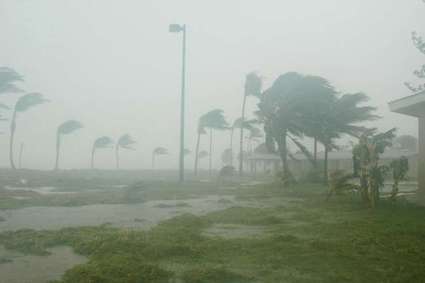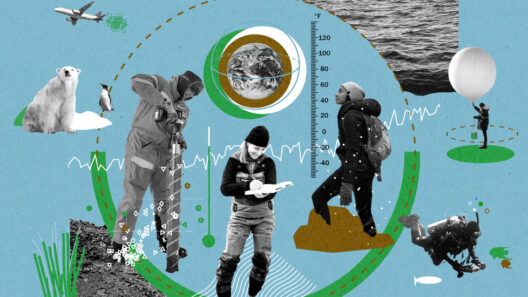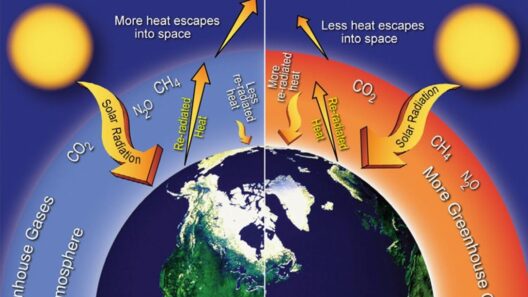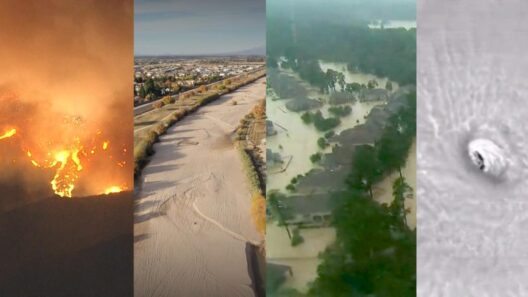Picture this: a world enveloped in a thick, suffocating smog, where breathable air becomes an elusive luxury. While such a scenario might sound like the plot of a dystopian novel, the specter of global warming raises extreme concerns that catalyze sensationalist doomsday predictions. But do we genuinely face the risk of suffocation from global warming? Let us embark on a meticulous examination of this question, one that weaves through the intricate tapestry of climate science, societal behavior, and technological innovation.
The immediate assumption could be that global warming directly correlates to a shortage of oxygen. This notion is deceptive. Global warming, primarily attributed to the accumulation of greenhouse gases in our atmosphere, doesn’t predominantly impair oxygen levels; rather, it disrupts climatic patterns and exacerbates environmental challenges. The critical aspect lies in understanding how these climatic alterations, manifested through heat waves, rising sea levels, and extreme weather events, catalyze broader systemic issues. Yet, do these conditions inexorably lead to human suffocation?
To navigate this discourse, we must first clarify the underlying mechanisms of global warming. Human activities, chiefly the combustion of fossil fuels, deforestation, and industrial processes, emit carbon dioxide (CO2) and other greenhouse gases. These substances form a thermal blanket around the Earth, trapping heat and altering natural processes. The resulting climate change can engender severe impacts, such as shifts in agricultural productivity, the proliferation of pests and diseases, and disruptions in freshwater availability. However, these adverse effects do not equate to a direct inability to breathe.
This brings us to the crux of the matter: while we may not be on the verge of suffocating in the literal sense, the indirect consequences of climate change are perilous. Adaptation is paramount. Rising temperatures impact air quality due to increased ground-level ozone and particulate matter, complicating respiratory health for vulnerable populations. Exposure to heightened pollution levels can exacerbate conditions such as asthma and other chronic respiratory diseases. Therefore, while our lungs may not suffer from a lack of oxygen, they are undoubtedly susceptible to respiratory ailments fueled by climate change.
Now, let us ponder the question: can human ingenuity counteract these challenges? Innovation is inherently a testament to humanity’s resilience. As the urgency for sustainable solutions escalates, a kaleidoscope of technological advancements emerges. From renewable energy sources such as solar and wind power to carbon capture and storage technologies, humanity is harnessing its intellect to mitigate greenhouse gas emissions. As we transition towards sustainable energy systems, we simultaneously reduce the concentrations of air pollutants that affect respiratory health. This intersection of technology and environmental stewardship may provide a semblance of relief from the suffocating grasp of pollution.
A playful contemplation arises: would it be feasible to breathe a sigh of relief amidst advancements in green technology? The optimism surrounding innovation is grounded in empirical progress. Countries around the globe are implementing policies aimed at reducing carbon emissions and promoting sustainable practices. For instance, the proliferation of electric vehicles aims to revolutionize transportation, diminishing dependence on fossil fuels, thus curtailing air pollution. Furthermore, urban planning that emphasizes green spaces can enhance air quality while concurrently cooling city environments, offering dual benefits that promote healthier living conditions.
However, optimism must be tempered with pragmatism. The challenges are multifaceted and require collective action. Individuals, communities, and governments must unite in the fight against climate change. Grassroots movements advocating for sustainable practices play an essential role in catalyzing change. These initiatives ranging from local clean-ups to global campaigns aim to foster a culture of environmental awareness. A popular saying captures this essence: “Think globally, act locally.” It encapsulates the notion that individual and community-level actions can accumulate collective impact.
Moreover, education serves as a formidable weapon against misinformation. The narrative around global warming often becomes muddled in sensationalism, leading to the proliferation of unfounded doomsday claims. By promoting accurate climate education, we can dismantle myths and empower the populace with knowledge. Studies show that informed citizens are more likely to engage in pro-environmental behaviors. Thus, fostering a culture of science literacy is not merely an academic endeavor; it is a societal imperative.
The discourse around global warming inevitably invites a spectrum of emotions, from anxiety about our planet’s future to a sense of urgency for action. Nevertheless, it’s paramount to approach these feelings with a balanced perspective. While we face significant challenges, the potential to create positive change remains robust. Humanity’s ability to innovate serves not only as a beacon of hope but also as a pragmatic response to an escalating crisis.
In conclusion, the specter of suffocation from global warming does not manifest as an imminent reality in terms of breathable air, but it heralds serious implications for our health and ecosystem. Through united efforts, technological innovation, community actions, and education, we can effectively navigate this complex landscape. The question is not whether we will be suffocated outright but whether we can harness our collective strength to avert such dire prospects. The stakes are high; however, the narrative of doom can be rewritten into one of resilience, adaptation, and a commitment to sustaining our planet for future generations.









Paint Stop Nonwoven Fabric Pocket Filter Media Manufacturer.